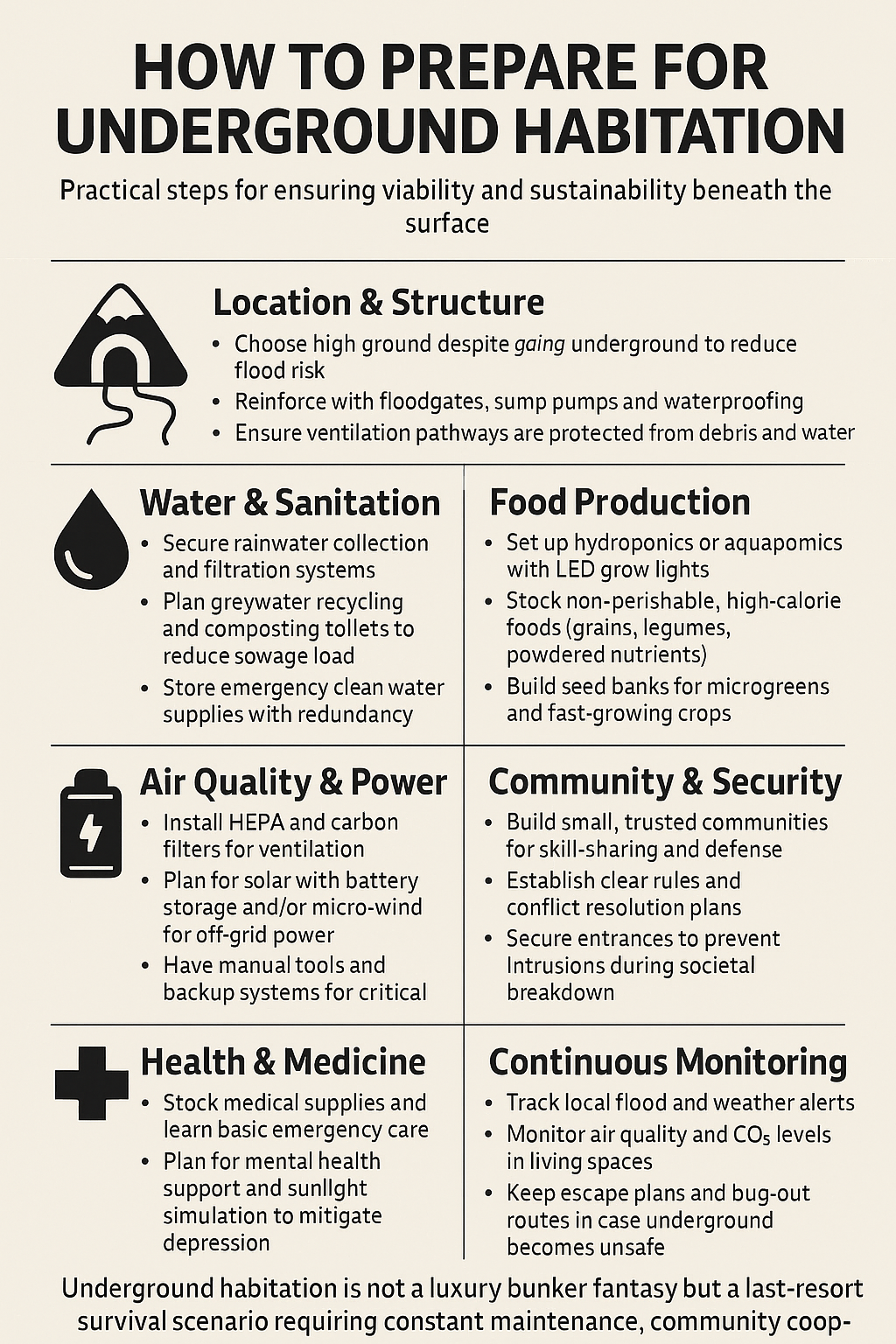
by Daniel Brouse and Sidd Mukherjee
July 15, 2025
Q: Where will be safe to live in the coming years as climate change accelerates?
Great question.
The simple answer is: "Underground."
The habitability of Earth's surface will become increasingly complicated as tipping points and cascading system failures accelerate. For the next 30 years, it will likely still be possible to live above ground if you remain nomadic with enough money and power--but keep in mind, the value of money will rapidly erode, and what counts as "wealth" will change, becoming increasingly difficult to protect and secure.
In this part of the world, the Appalachian Trail will likely become a primary trade and migration route, but it will be extremely dangerous due to raping, pillaging, and collapse of social structures. If cannibalism becomes widespread, you will need to ensure you do not become livestock.
We are going to start seeing "surges" in sea level rise where, instead of millimeters of rise per year, some years will suddenly see feet of rise in a single year, likely 2-3 feet per year for several consecutive years. When this happens, places like Philadelphia and Camden will become uninhabitable overnight. Infrastructure, sewer systems, water treatment, and energy grids will fail in these low-lying regions, forcing mass migration and amplifying societal collapse.
These surges will not only drown infrastructure but will contaminate freshwater systems, disable transport routes, and spread disease. Expect these rapid shifts to happen episodically and without much warning, making it impossible for most people to adapt in place.
Within 30 years, much of Earth's surface will likely become uninhabitable due to deadly wet-bulb heat, violent storms, flooding, and societal collapse. At that point, finding a secure underground living space will become the objective.
However, underground living brings its own challenges:
Food production without sunlight.
Water access and purification.
Sanitation: The hardest part will be sewage removal and flood control.
Flash floods will increase, contaminating underground spaces with sewage and disease.
Underground dwellings will be at risk of collapse or drowning during extreme weather.
People living in below-grade housing already have the highest mortality during flash floods, a risk that will only increase.
In the coming decades, if you have the means, nomadic relocation may temporarily work as you chase the last habitable microclimates. However, this window is closing quickly as tipping points and system failures compound.
Local community resilience, underground flood-resistant infrastructure, and developing off-grid water and food systems will matter far more than money in the world we are heading toward.
Where will it be safe? Nowhere for long. The collapse will come in waves:
Economic collapse,
Infrastructure collapse,
Social collapse,
Environmental collapse.
The final wave will be surface uninhabitability, forcing humanity underground if it wishes to survive. This will be a harsh, disease-ridden, and resource-constrained existence requiring preparation far beyond bug-out bags and solar panels.
If you want to survive, think beyond climate denial and political distraction. Think engineering, hydrology, sanitation, and nutrition, not just "location." The sooner we face this reality, the better we can prepare.
Location & Structure
Choose high ground despite going underground to reduce flood risk.
Reinforce with floodgates, sump pumps, and waterproofing.
Ensure ventilation pathways are protected from debris and water.
Water & Sanitation
Secure rainwater collection and filtration systems.
Plan greywater recycling and composting toilets to reduce sewage load.
Store emergency clean water supplies with redundancy.
Food Production
Set up hydroponics or aquaponics with LED grow lights.
Stock non-perishable, high-calorie foods (grains, legumes, powdered nutrients).
Build seed banks for microgreens and fast-growing crops.
Air Quality & Power
Install HEPA and carbon filters for ventilation.
Plan for solar with battery storage and/or micro-wind for off-grid power.
Have manual tools and backup systems for critical needs.
Community & Security
Build small, trusted communities for skill-sharing and defense.
Establish clear rules and conflict resolution plans.
Secure entrances to prevent intrusions during societal breakdown.
Health & Medicine
Stock medical supplies and learn basic emergency care.
Plan for mental health support and sunlight simulation to mitigate depression.
Maintain physical fitness to handle manual labor and emergencies.
Continuous Monitoring
Track local flood and weather alerts.
Monitor air quality and CO2 levels in living spaces.
Keep escape plans and bug-out routes in case underground becomes unsafe.
Remember:
Underground habitation is not a luxury bunker fantasy; it is a last-resort survival scenario requiring constant maintenance, community cooperation, and adaptability in a rapidly collapsing climate system.
Underground Living Guide

Tipping Cascades: The Nonlinear Dominoes of Climate Collapse
The Domino Collapse: Amazon Rainforest Dieback and the Ozone Feedback Loop
Update on Interactions and Feedbacks
Read: Solutions to the Fossil Fuel Economy and the Myths Accelerating Climate and Economic Collapse
Philadelphia's Heat Dome: Wet-Bulb Temperatures Signal a Climate Tipping Point
Burning to Stay Cool: How Our Fight Against Heat Is Fueling Climate Collapse
Climate Change, the Jet Stream, and East Coast Atmospheric Rivers
Climate Change and Deadly Humid Heat
Climate Change: Rate of Acceleration